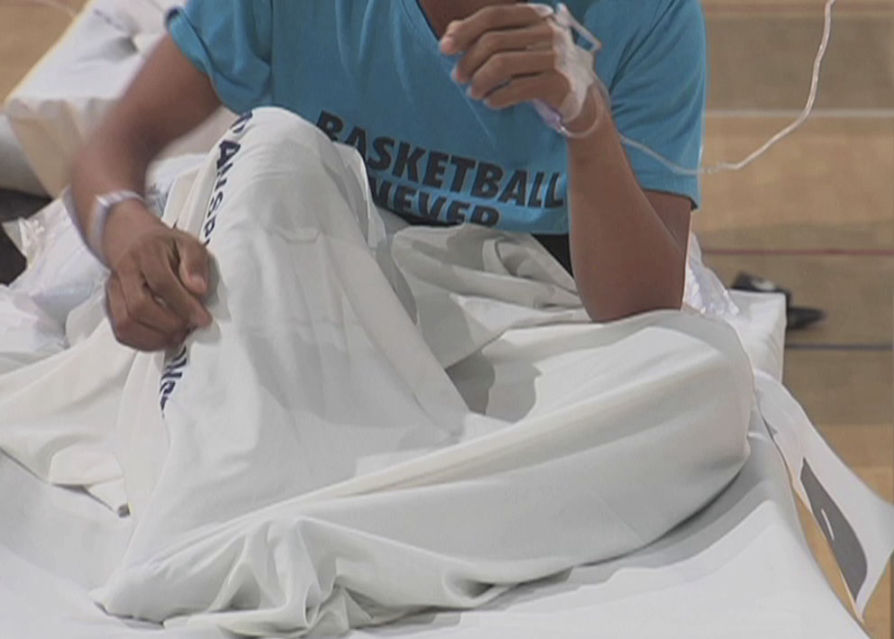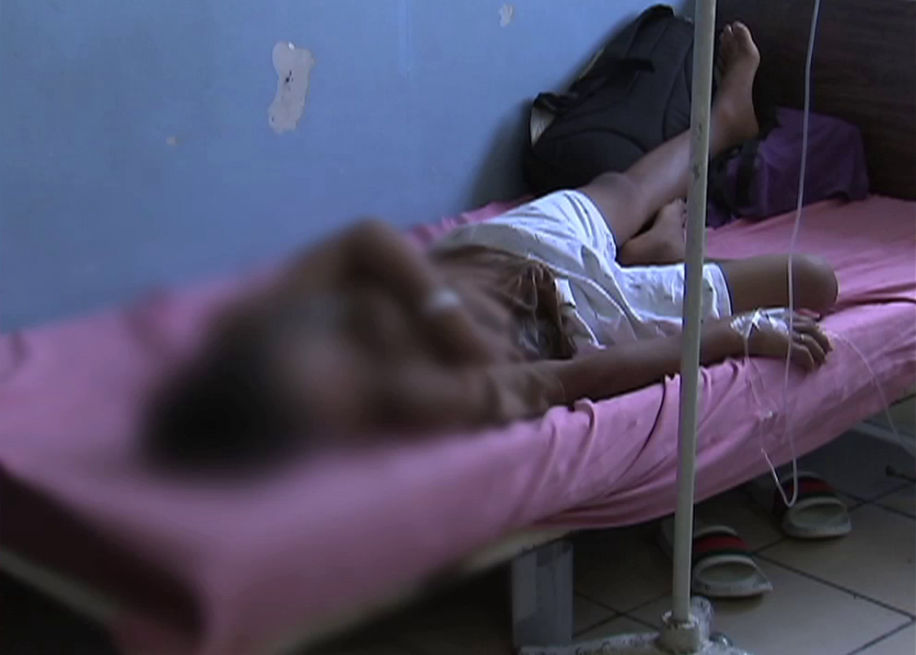We use cookies to ensure you get the best browsing experience. By continued use, you agree to our privacy policy and accept our use of such cookies. For further information, click FIND OUT MORE.
The place is called Aroma, but the smells in the Tondo, Manila neighborhood is anything but pleasant. Aside from the putrid odors, the residents of the flood-prone area have had to contend with a swarm of furry little creatures that bring with them destruction, disease, and death.
THE WALLS AND DOORS of Rhea Globio's home were no match for the tiny teeth of her hungry visitors. With the ceiling and floors full of rat holes, she could do little to keep the rainwater out of her home.
Rhea's tiny guests would help themselves to snacks and powdered coffee, often chewing their way into the daily stock of food that the family had thought they had safely stored away.
But Rhea knows, from experience, that things could be much worse.
Once, she woke up with rats having taken a bite out one of her children.
"I was surprised when they woke up, there was blood on the sheets," she said. "I thought, 'Oh my, the rats are eating people now.'"
On Brigada, Cesar Apolinario explores the Aroma neighborhood in Tondo, Manila, where residents have had to deal with a vermin problem brought on by the the garbage dumped in the area.
IRONICALLY ENOUGH, the people and the vermin have made their home at Aroma for the same reason.
The site has served as a temporary dumping ground since Smokey Mountain closed down in 1995.
Some residents have made a living scavenging from the garbage in the area. Unfortunately, so did the rats.
"When there's garbage there's opportunity. The rats would have food sources," University of the Philippines biologist Mariano Roy Duya says.
The presence of rats, in fact, is only one of many problems brought about by the garbage problem in the area. It has also affected the sewage system in Aroma, leading to the quick rise of floodwaters during rainy season.
All these make Aroma the type of environment that's ripe for leptospirosis, a diseas contracted from the waste and urine of animals such as rats. Even a small abrasion could lead to an infection that could turn deadly.

Tea-colored urine
Cough, vomiting

Decreased urine output
Diarrhea
THE NATIONAL KIDNEY AND TRANSPLANT INSTITUTE says leptospirosis patients admitted to their care were usually men who had prolonged exposure to contaminated waters because of their work.
"They'd be standing in floodwaters for long periods — tricycle drivers, pedicab drivers, even construction workers — they wouldn't just be wading in, they'd be exposed to floods sometimes overnight," says Dr. Russel Villanueva, a nephrologist at the NKTI.
If left untreated, leptospirosisis can cause kidney failure, brain damage, massive internal bleeding and, eventually, death.
But Tatay Boy, a 54-year-old Aroma resident, did not even have to brave floodwaters to contract leptospirosis.
He learned from doctors that he had ingested something contaminated at breakfast before work.
"It wasn't from any wound. I just ate something that rats had urinated on," he says.
Since the start of the year, hundreds of Filipinos have ended up in hospitals due to leptospirosis.
Leptospirosis cases in the National Capital Region from January to August 2018 shot up 358 percent from the total number counted in the same period last year, according to figures from the Department of Health (DOH).
The agency declared a leptospirosis outbreak in 18 Metro Manila barangays in July. Most cases were recorded in Quezon City, but the disease was also rampant in the cities of Taguig, Parañaque, Pasig, Malabon, and Mandaluyong.
According to the DOH, an increase in leptospirosis cases in September is expected in the aftermath of typhoon Ompong.
The DOH deems leptospirosis one of the deadliest diseases, as the earliest symptoms make it easy to mistake for a common fever. A patient with a severe case can develop yellowish skin and reddened eyes.
"If the leptospirosis gets bad and the patient is hospitalized, according to our data, 10 to 15 percent die. So for every one hundred leptospirosis patients, up to 15 people die," Health Undersecretary Rolando Enrique Domingo says.
Department of Health Usec. Rolando Enrique Domingo says that more than a thousand Filipinos have been diagnosed with leptispirosis this year, due to the flooding brought by strong rains.
Domingo says every person should make an effort to keep their surroundings clean. One simple but important way to keep pests and diseases away is to avoid littering.
"First, we should be mindful of our environment. We should try to prevent flooding in our areas, so we need to make sure our drainage systems are free of garbage," he says.
"We should be mindful of where we dump our trash. If we make sure our surroundings are clean, there would be fewer rats, and we'd have less risk of leptospirosis."
of leptospirosis in Metro Manila from January to August 2018, up from 268 cases in the same period last year, a 358% increase.
of leptospirosis nationwide from January to August 2018, up from 1,085 cases in the same period last year, a 105% increase
reported among leptospirosis patients from January to August 2018, 69 of whom were from Metro Manila.
But back at Aroma, wiping out the vermin is far easier said than done, even as local officials say they conduct cleaning around the compound every two weeks.
At home, Rhea leaves out an offering of bright blue rat poison.
Two mice come for a nibble just a few moments after she hit the lights.
But even after the poison kicks in, another swarm of rats scurry just outside her home.
Share This Story